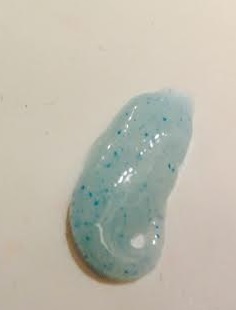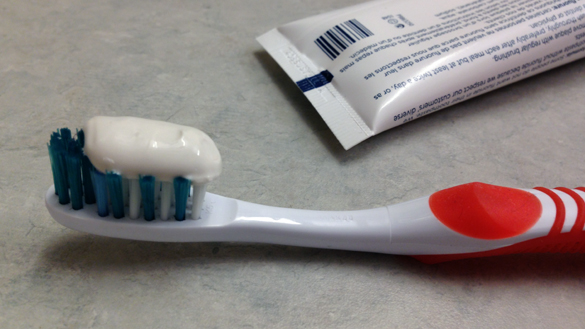Would you ever chew on a plastic grocery bag and spit the broken-up bits down the drain? Neither would I… knowingly.
However, much to my surprise, when I opened my new tube of Crest Pro-Health toothpaste, I was surprised and disappointed to find it filled with basically the equivalent… microbeads!


Microbeads are small pieces of plastic that are being used in cosmetic products, including face
wash, hand soap and toothpaste. The issue has been well articulated in other blogs and articles, but in short, these tiny pieces of plastic get washed down the drain and are finding their way into rivers, lakes and oceans due to the fact they cannot be removed in wastewater treatment plants because they are so small.
So, why are they in toothpaste? For decorative purposes only! To add colour and texture. They do not break down in your mouth or help to clean your teeth. In fact, in some cases they are being found by dental hygienists in patient’s mouths, embedded in their gums, leading to irritation and tooth decay.Once they are in the water bodies they are being ingested by fish and other organisms… toxins being passed along the food chain. Not good.
Needless to say, I did not want this in my mouth or in my bathroom. Because it was a new tube of toothpaste I still had the receipt. I took it back to the store where I purchased it, explained to the nice lady why I was returning the toothpaste (educating her in the process), and got my money back. I also sent Crest an email urging them to remove the microbeads from this and other products, and that I will be making a concerted effort to NOT purchase anything made by Proctor & Gamble until that is done. I also told them I’d tell all my friends, so here we are.
In the future I will be looking for the word polyethylene in any product I purchase, and educating myself on what other products contain microbeads. I will also join the International Campaign Against Microbeads in Cosmetics and download the app so I can easily search products in the store while I’m shopping.
What are you doing to steer clear of microbeads? Share your story in the comments section!




I had a similar problem. I just used the toothpaste because it bugged me more to throw it out and waste it than to just use it (I could not return). However I looked on the tube and could find no evidence in the ingredients of microbeads: what should I look for? I know sometimes the things that LOOK like microbeads may not actually be plastic. How does one confirm their presence?
Hey Teresa, thanks for sharing your experience. From what I’ve read, look for polyethylene on the list of ingredients; this is the most common type of microbead. (Note: Polyethylene isn’t the same as polyethylene glycol.) Other ingredients to watch out for: polypropylene, poly-e-terephthalate, and polymethyl methacrylate. A Google search will also bring you up some great databases to cross-check other cosmetics and products in your home that may contain them. Good luck!
One wonders what Health canada & the US FDA are really doing w/ our $$! Obviuosly not protecting us!! ARe the young moms aware of this issue? Are the medical-dental
higher ups aware??
We ALL should be reading EVERYLABEL-or use baking soda & apple cider vinegar.